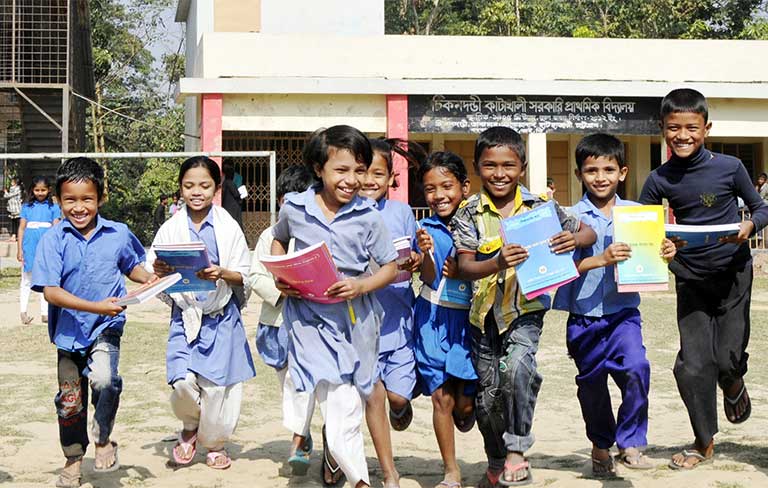
About 18 percent of the primary students drop out in Bangladesh with boys accounting for most of it, despite different efforts by the government.
The number of female students is higher in primary schools, but the dropout rate is higher for male students, according to the Directorate of Primary Education and Bangladesh Bureau of Educational Information and Statistics.
Government stipends awarded to female students have prevented them from dropping out, said Rasheda K Choudhury, executive director of Campaign for Popular Education, or CAMPE.
Primary and Mass Education Secretary Akram-Al-Hossain, however, said the real rate of dropout is much lower, thanks to different initiatives taken by the government.
The government and private primary schools counted more than 20 million students in 2019, with girls accounting for 51.08 percent of the total.
At least 2.8 million students were admitted to the first grade in primary schools in 2019. Among them, 1.43 million were boys and 1.37 million were girls.
In 2005, 47.2 percent of primary students dropped out. The dropout rate narrowed to 39.8 percent in 2010 with more boys abandoning schools than girls.
According to the latest survey of the Directorate of Primary Education, 17.9 percent of primary students dropped out in 2019. The dropout rate for boys was 3.5 percentage points higher than girls.
Earlier only the girls in the government primary schools used to receive government stipends. Since 2015, boys have also been receiving it. At least 14 million primary students are now receiving government stipends.
Since January last year, a pre-primary student has been receiving Tk 75 a month and first to fifth graders Tk 150. For students from grade six to eight, the monthly stipend amount is Tk 200.
It will take some time to reap the benefits of boys receiving stipends, Rasheda Choudhury told bdnews24.com.
The dropout rate for boys is higher as they did not receive stipends earlier, she said adding all students from the mainstream schools and non-formal education institutions should be brought under the stipend programme.
“Children from the disadvantaged groups study in the non-formal education system, but they are deprived of the stipend. The government should provide a stipend to more children to reduce the dropout rate.”
Some parts of the country have a higher dropout rate, said Choudhury, adding that many poor families send their children to work to make a living.
In Narshingdi, for example, small children are engaged in weaving with looms. Many children drop out this way.”
“The dropout rate has declined significantly. It dropped to a single digit if you don’t count the repeats,” Senior Secretary Akram-Al-Hossain told bdnews24.com.
“We are working to find out how to calculate the dropout rate properly. Our development partners also say that the dropout rate has declined.”
Stipends provided to boys have helped reduce the dropout rate, he said adding the government initiatives to ensure quality education have also played a role in it.
Poverty causes many primary students to drop out, he said.
Source: bdnews24.com

